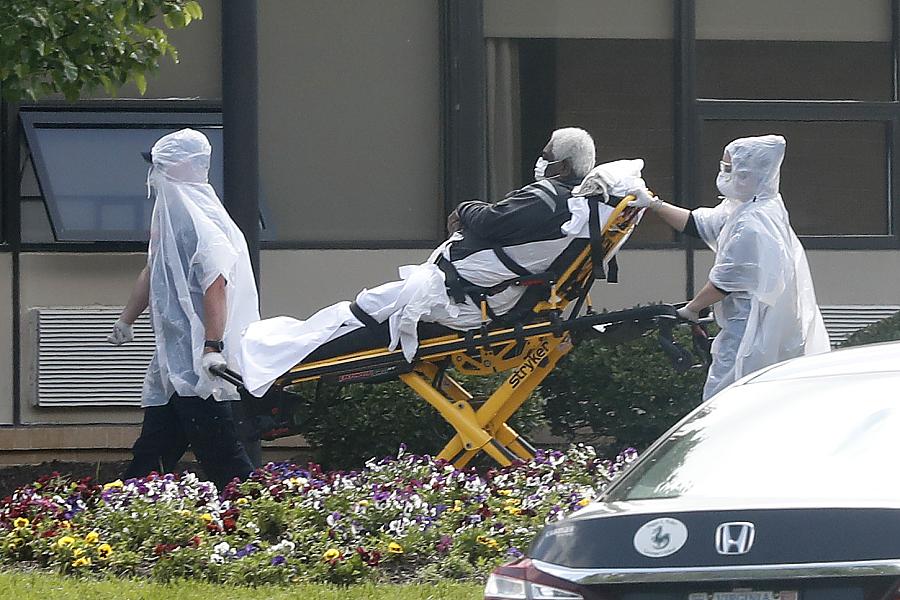Unravelling the horrific toll of COVID-19 in America’s nursing homes

A nursing home resident is wheeled on a stretcher from an ambulance into the Canterbury Rehabilitation and Healthcare Center in Richmond, Virginia, where 42 residents of the nursing home died from the COVID-19 virus pandemic.
(Geoff Burke/USA TODAY Network)
My next reporting project starts with a staggering death count: COVID-19 killed more Americans in nursing homes last year than the nation counted combat casualties during the combined wars in Korea, Vietnam, Afghanistan and Iraq.
Facilities housing just 1% of the population saw at least one in four of last year’s COVID-19 deaths. We know the official pandemic death toll in nursing homes is an undercount because of the extensive reporting efforts that went into tracking the disaster as it unfolded. My reporting seeks deeper answers about what went wrong.
Before, during and after the pandemic, nursing homes have operated under some of America’s strictest health care regulations. Taxpayers subsidize the care delivered inside. It was clear from the first U.S. COVID-19 outbreak in a nursing home in Washington state that these institutions were exceptionally vulnerable to the public health crisis of a century.
Understanding how the toll mounted during wave after wave of the COVID-19 pandemic is a mission that I take personally. So should every child, sibling and spouse with an interest in seeing our loved ones — and ourselves one day — realize the right to age and die with dignity.
In a nation where the fastest-growing population is age 80 and over, quality nursing homes are nothing less than essential infrastructure. I learned this the hard way during a pandemic-induced crash course into the black hole called end-of-life care.
My 84-year-old father was hospitalized after a minor esophageal spasm spiraled into pneumonia at the start of the pandemic shutdown. Six weeks later, he could no longer sit, stand nor feed himself. At the time, nursing homes were limiting new patient admissions to protect those already inside. My family could not secure a bed in a reputable institution. My father’s respiratory therapist warned us of the only available option that he would not so much die as be neglected to death.
The extraordinary effort and resources needed for his care at home helps to explain why broader interest in skilled nursing facilities has extended from Main Street to Wall Street. The aging of the Baby Boomer generation has corporate America getting ready for what analysts call the coming “silver tsunami.”
This stage of life, as my father would say, is not for sissies. My education began with managing the team required for his day-to-day survival. When the hospital discharged him to his house, I was waiting with a home health aide on the first shift of her new job. Paramedics carried my father from a stretcher to a newly installed medical bed that had replaced the living room couch. None of us knew what to do with the feeding tube still in its box.
As the pace of end-of-life care advanced, I would answer as many as 14 calls a day from hospice alone, while juggling relentless news deadlines and a young child whose care had been abandoned by once-trusted institutions. I survived the pandemic, but my father ultimately could not.
The pandemic underscored how much we rely on government regulators and nursing home operators to ensure a viable and humane option for the inevitable time when families must make difficult medical choices. COVID-19 magnified every fault line in a nursing home industry largely funded with tax dollars, yet long known to have problems with insufficient staffing and haphazard infection-control protocols.
Although my story starts with numbers, it must be told through the stories of those who lived and died. I want to use this 2020 National Fellowship to take readers inside the nursing homes where so many spent their final hours alone. Reporting this project is the least they deserve.

